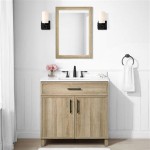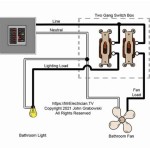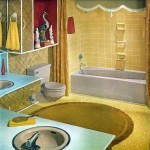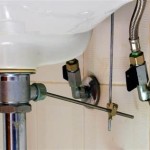ADA Bathroom Toilet Paper Holder Requirements: A Comprehensive Guide
The Americans with Disabilities Act (ADA) sets forth specific guidelines to ensure accessibility and usability of public accommodations for individuals with disabilities. These guidelines extend to seemingly minor details like toilet paper holders in restroom facilities. Adherence to ADA standards is not only a legal requirement but also a matter of inclusivity, promoting equal access for all members of society.
This article will delve into the precise requirements stipulated by the ADA concerning toilet paper holders in accessible restrooms. It will examine the positioning, height, and operability standards outlined in the Act, providing a comprehensive understanding of the regulations to ensure compliance.
Understanding the Scope of ADA Regulations for Toilet Paper Holders
The ADA regulations specifically address the placement and usability of toilet paper dispensers within accessible toilet rooms. These requirements are designed to ensure that individuals with limited reach, strength, or dexterity can easily access and utilize toilet paper. The primary focus is on facilitating independent use without requiring assistance from others. The regulations apply to new construction and alterations or modifications to existing facilities. The precise specifications aim to create an environment of accessibility, ensuring dignity and promoting usability for a broad range of individuals with disabilities.
It is important to differentiate between the ADA Standards for Accessible Design and merely following local building codes. While local codes may address some accessibility aspects, the ADA provides a more detailed and comprehensive set of requirements that are federally mandated. Facilities must adhere to both, but in cases where there are conflicting guidelines, the more stringent requirement generally takes precedence. Furthermore, understanding the nuances between the ADA Standards for Accessible Design and other accessibility standards, such as those developed by the ICC (International Code Council), is crucial. Though there is often overlap, the ADA is the legally binding standard in the United States for covered entities.
The regulations also consider different toilet configurations. Specifically, requirements change depending on whether the toilet is in a standard stall, an accessible stall, or a single-user restroom. Each configuration has unique space requirements and therefore necessitates different placement considerations for the toilet paper dispenser.
Key Specifications for Toilet Paper Holder Placement and Height
The ADA Standards for Accessible Design provide precise measurements for the location of toilet paper dispensers. The holder must be located within accessible reach ranges. Specifically, the dispenser outlet must be located a minimum of 7 inches (178 mm) and a maximum of 9 inches (229 mm) in front of the toilet seat. This measurement is taken from the front edge of the toilet seat to the dispensing point of the toilet paper. This ensures that individuals seated on the toilet can reach the paper without excessive reaching or twisting.
The height requirement is equally important. The dispensing outlet of the toilet paper holder must be a minimum of 15 inches (380 mm) and a maximum of 48 inches (1220 mm) above the finished floor (AFF). This vertical range allows access for individuals who use wheelchairs and those who may have difficulty bending or reaching high above their heads. The height measurement is critical to ensure usability for a diverse range of individuals.
In addition to the front and height dimensions, the lateral positioning of the toilet paper dispenser is also regulated. The dispenser should be located on the wall closest to the toilet. This helps to reduce the distance a user needs to reach and also ensures that the dispenser is within a readily accessible area. When a grab bar is installed above the toilet paper dispenser, the dispenser should ideally be positioned below the grab bar to avoid interference. If the grab bar is installed on the side wall, the toilet paper dispenser should be positioned in front of the grab bar.
These dimensions are not merely suggestions; they are mandatory requirements for compliance with the ADA. Facilities should carefully measure the placement of the dispenser during installation and ensure that it falls within the specified ranges. Regular inspections should also be conducted to verify that the dispenser remains in compliance, especially after any renovations or alterations to the restroom.
Operational and Design Considerations for ADA-Compliant Toilet Paper Holders
Beyond placement and height requirements, the ADA Standards for Accessible Design also address the operability of toilet paper dispensers. The dispenser must be operable with one hand and without requiring tight grasping, pinching, or twisting of the wrist. This means that the mechanism for dispensing toilet paper should be designed to require minimal force and be easily manipulated by individuals with limited hand dexterity.
The use of spring-loaded dispensers that require significant force to operate should be avoided. Similarly, dispensers with small or difficult-to-grasp handles may not be compliant with ADA standards. The chosen dispenser should have a design that allows for easy pulling or tearing of the toilet paper without requiring excessive effort. Lever-operated dispensers and those with large, easily grasped handles are often preferred.
The design of the toilet paper holder should also consider the potential for accidental dislodgement or damage. The dispenser should be securely mounted to the wall to prevent it from being easily knocked off or pulled away. This is especially important in high-traffic areas or facilities that are frequently used by children. Using tamper-resistant mounting hardware can further enhance the security and durability of the dispenser.
Another important aspect of the design is the ease of refilling the dispenser. The dispenser should be designed to allow for quick and simple refilling with minimal effort. The refill mechanism should be accessible and operable with one hand. This ensures that maintenance staff can easily replenish the toilet paper supply without requiring specialized tools or assistance. Furthermore, transparent or semi-transparent dispensers can help staff easily monitor the fill level and proactively refill the dispenser before it runs out.
The ADA Standards for Accessible Design emphasize the importance of ongoing maintenance and upkeep of accessible features. Regularly inspect the toilet paper dispenser to ensure that it is in good working order and that the toilet paper is readily available. Promptly repair or replace any broken or damaged dispensers. Maintaining the accessibility of toilet paper dispensers is a continuous process that is essential for ensuring compliance with the ADA and promoting inclusivity.
Consideration should also be given to the type of toilet paper used with the dispenser. Very stiff or tightly wound toilet paper can be difficult to dispense, even with an ADA-compliant holder. Choosing a softer, more easily dispensed toilet paper can further enhance the usability of the restroom for individuals with disabilities.
In summary, ensuring ADA compliance for toilet paper holders in restrooms requires careful attention to placement, height, operability, and maintenance. By adhering to the precise standards outlined in the ADA Standards for Accessible Design, facilities can create a more inclusive and accessible environment for all users. This demonstrates a commitment to equality and respect for individuals with disabilities.
Requirements For The Most Common Types Of Toilet Tissue Dispensers In Accessible Rooms Rethink Access Registered Accessibility Specialist Tdlr Ras

Ada Compliance Vandal Stop S
Requirements For The Most Common Types Of Toilet Tissue Dispensers In Accessible Rooms Rethink Access Registered Accessibility Specialist Tdlr Ras

Ada Compliant Toilet Paper Dispensers

Chapter 6 Toilet Rooms
Compliant Ada Dispenser Heights And Locations

Ada Bathroom Grab Bar Requirements 2024

Chapter 6 Toilet Rooms

Accessories In Public Restrooms Ada Guidelines Harbor City Supply

Installation Height Of Toilet Paper Holder Knowledge Base
Related Posts







